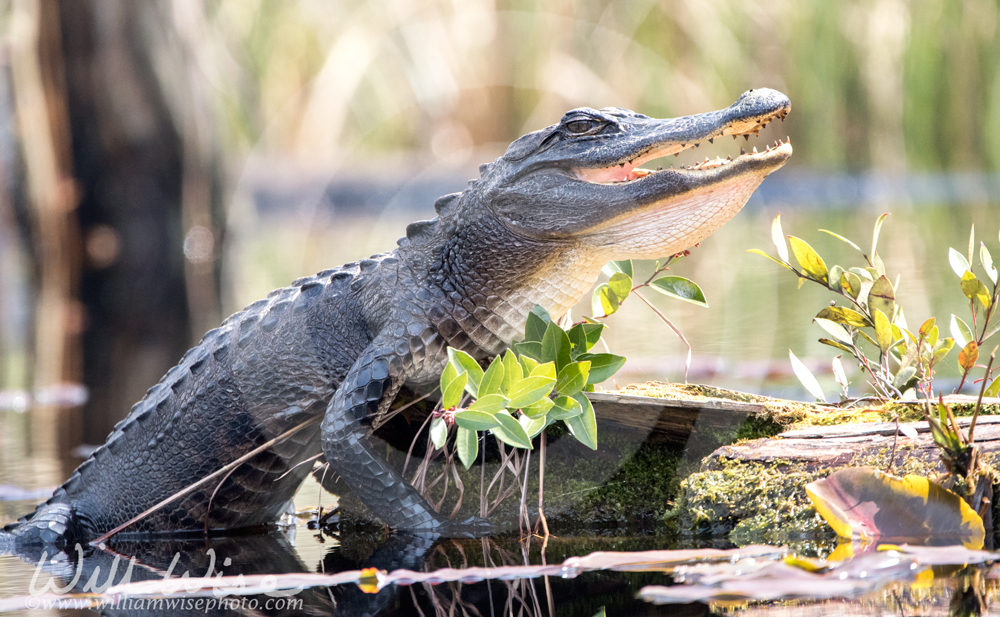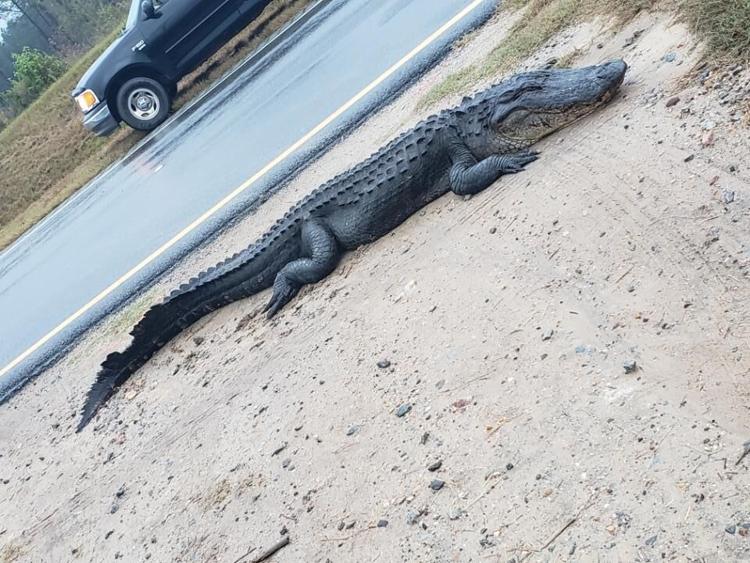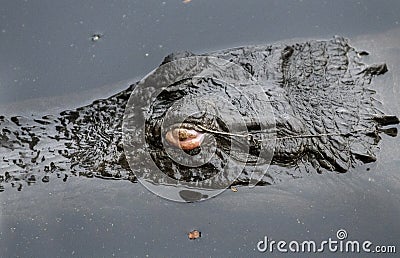Okefenokee Joe, ‘an amazing old’ alligator named after a Georgia singer, has died
By María Luisa Paúl
September 11, 2021 at 7:00 a.m. EDT
https://www.washingtonpost.com/science/2021/09/11/okefenokee-joe-alligator/

Photo credit: Okefenokee Joe, an 11-foot-long alligator, died on July 20, 2021. The almost-80-year-old alligator was part of a satellite tag project by the University of Georgia Marine Extension's Coastal Ecology Lab and Okefenokee Swamp Park. (University of Georgia Marine Extension and Georgia Sea Grant)
At almost 80 years of age, Okefenokee Joe, an 11-foot-long alligator, had dominated over the largest swamp in North America. Since last year, a team of researchers had kept tabs on his activity, competitions with male counterparts and soirees with female alligators — until his satellite tag stopped moving.
The reptile, who had become a beloved fixture at Okefenokee Swamp Park in Georgia, was dead.
The news of his death was announced on Facebook by the University of Georgia Marine Extension and Georgia Sea Grant’s Coastal Ecology Lab — a platform the program utilizes to both shed light on their research findings and provide a glimpse into the animals’ colorful personalities. This Monday’s #GatorGossip post inspired heartfelt comments by visitors who recalled sighting Okefenokee Joe and sent their condolences over the loss of “an amazing old gator.”
“That’s exactly why we do it,” said Kimberly Andrews, a coastal ecology specialist at University of Georgia Marine Extension and Georgia Sea Grant. “We want people to feel the same way about alligators that we do, and the critical measure of that is that they understand their behaviors and they don’t feel at risk.”
For the past four years, in conjunction with Okefenokee Swamp Park, Andrews and her team have been tagging alligators in the 438,000-acre wetland. The goal, she said, is to learn more about the reptiles’ behavior, movement and reproduction. Serving a dual role of keeping other animal populations in check and creating waterways and hollows for aquatic fauna to inhabit during droughts, alligators are “a vital component in their ecosystems,” Andrews said.

American Alligator basking near Big Water lake in the Okefenokee National Wildlife Refuge © Photographer: William Wise | iNat Observation: 78230998
Located in southeastern Georgia, by the state’s border with Florida, the Okefenokee Swamp stretches over three counties, and it is one of the largest intact freshwater ecosystems in the world.
Named after the Choctaw phrase for “Land of the Trembling Earth,” the Okefenokee Swamp and its black waters house approximately 20,000 alligators, said Kim Bednarek, the park’s executive director. Despite the thousands of tourists who flock to its trails and natural beauty, an incident with a reptile has never been recorded.
“The alligators are our iconic and charismatic features,” she said. “They actually inspire more people to visit and learn about conservation and protection.”
Understanding the complexity of a species that has withstood millennia without much evolution can help scientists uncover ways to protect wildlife. Okefenokee Joe contributed to this knowledge, said Andrews, who oversees the Coastal Ecology Lab, “largely by living the best alligator life out there.”
Though researchers are unable to pinpoint his exact date of birth, signs of aging like cataracts and loss of sight placed him a little under 80 years old — alligators’ typical life expectancy. If so, Okefenokee Joe — named after the stage name of singer and environmentalist Dick Flood — would have lived through some of the most consequential moments in American history, including World War II, the Cold War and the Internet age.
Despite his age, the alligator was able to dominate over the swamp’s social community, taking over a territory spanning over three miles across the waterway.
Even if his eyesight was faltering, his strength and size made him “quite popular with the ladies,” Andrews said. Over the alligators’ mating season — which stretches from spring to early summer — Okefenokee Joe visited multiple females. Once the babies hatch during the next months, researchers are hoping to do a genetic study to uncover the reptile’s lineage.
Yet, during the year that he was tagged, scientists began observing changes in Okefenokee Joe. He began moving less and then passed on the dominance torch over to Obadiah, a younger male alligator who won in a physical altercation between the two. Okefenokee Joe was ready to return to nature.
Signs of his death emerged on July 20 when the satellite tag scientists had attached to his nuchal shield — the equivalent of an alligator’s neck — showed no movement. “We gave it a month because we thought that, although unusual, it could be the case that his tag fell off,” Andrews said.
But when researchers ventured to the secluded and remote area of the pond, they found his decomposing remains with the tag still attached. The device has since been placed on another male alligator, Andrews said.
While Okefenokee Joe’s life provides a glimpse of “the circle of life,” he continues to contribute to the Okefenokee Swamp Park’s conservation and education mission, Bednarek said.
“One of the primary goals is to connect people to the environment, to the flora and the fauna and to create an emotional connection, so that they care about the natural world,” Bednarek said. “We really see Okefenokee Joe as an ambassador alligator and he’s doing it even after he passed by inspiring people to learn about him and about the Okefenokee region and the importance of conserving it.”
Bednarek said visits to the swamp have increased by the thousands in recent years, drawn in by the Georgia Marine Extension and Georgia Sea Grant research. The park usually sees some 50,000 visitors each year, but the expansion of educational activities have led to more than 10,000 schoolchildren to visit per year — some hoping to catch a glimpse of scientists tagging alligators like Okefenokee Joe.
“It’s a cornerstone piece of our work to educate the public and educate the children and their families,” she said. “Especially when it comes to a species that is very telling of the health of the ecosystem and they actually support the lives of the other creatures that live within the system.”
The massive and dominant reptile will still be missed by those who studied him.
“We’re objective scientist, but you still have a moment of ‘oh, Joe,’” she said. “You build a sort of relationship by observing these fascinating creatures every day and getting to watch the soap opera of American alligators in the swamp, as we joke.”







:strip_exif(true):strip_icc(true):no_upscale(true):quality(65)/arc-anglerfish-arc2-prod-gmg.s3.amazonaws.com/public/RPLR2ICQH5D2LCQWHYEVOQHK2U.png)





